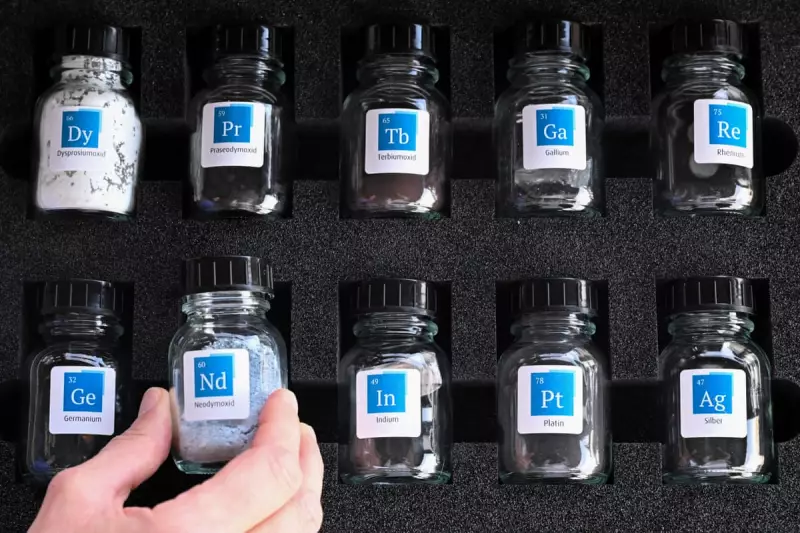
The White House has launched an urgent campaign to dismantle China's stranglehold on the global supply of rare-earth metals, materials fundamental to modern technology and national defence. This strategic pivot aims to resurrect a domestic industry that has lain dormant for decades, but faces a formidable challenge against Beijing's established dominance.
The First Magnet in a Generation
US Treasury Secretary Scott Bessent recently showcased a small but symbolically potent object: the first rare-earth magnet manufactured on American soil in twenty-five years. He presented this milestone during an interview with Fox Business, hailing it as tangible proof that the United States is actively severing "China's chokehold on our supply chain."
Bessent credited a new mineral processing centre established by the company eVAC in South Carolina for this breakthrough. "We're finally becoming independent again," he declared, underscoring the administration's broader objective. This effort is central to President Trump's strategy, which employs tariffs and other economic instruments to lure the rare-earth processing and manufacturing industry back to the United States.
China's Formidable Head Start
The scale of the challenge is immense. China currently accounts for approximately 70% of worldwide rare-earth mining and commands over 90% of global processing capacity. This commanding position allowed Beijing to restrict exports to the US in response to American tariffs, prompting the Trump administration to hastily broker alternative trade agreements with nations including Australia, Malaysia, Cambodia, and Japan.
Although a temporary trade truce on rare earths has been reached between the two superpowers, China's entrenched advantage will be difficult to erode. Data from the US Geological Survey reveals the depth of American reliance, showing that the US imported 80% of the rare earths it consumed in 2024. For specific, highly specialised minerals, the dependence is almost total.
"These materials are used in electric motors for EV cars but also in guidance systems that have obvious applications for the defense department," explained Adam Webb, head of energy raw materials at Benchmark Mineral Intelligence. "Anything that has a decent magnet in it uses rare earths."
This includes dysprosium, which is vital for semiconductor production, and samarium, essential for military applications. For these, China's refinement dominance soars to 99%. Furthermore, minerals like dysprosium and terbium are critical components in the powerful magnets required for electric vehicle engines, wind turbine generators, mobile phones, and even nuclear reactors.
A Global Scramble for Alternatives
Recognising the strategic vulnerability, the US is pursuing a multi-pronged approach. Domestically, the Pentagon has taken a significant stake in MP Materials, the operator of the Mountain Pass mine in California—the largest operational rare-earth mine in the US. The Department of Defense plans to establish a new "mine-to-magnet" plant, dubbed 10X, to produce magnets crucial for F-35 fighter jets, drones, and submarines.
Globally, the administration is actively securing partnerships. Earlier this year, President Trump struck a deal for minerals in Ukraine, and the government of Pakistan signed a $500 million agreement with the American firm US Strategic Metals for access to antimony and copper. Greenland and Brazil, both possessing significant rare-earth deposits, are also key focuses of diplomatic attention.
US Interior Secretary Doug Burgum has highlighted the need for the government to compete directly with state-backed Chinese capital. He has even floated the idea of a sovereign wealth fund to accelerate domestic production, questioning, "Why wouldn't the wealthiest country in the world have the biggest sovereign wealth fund?"
However, history offers a cautionary tale. Past US efforts to support domestic rare-earth production have foundered when China simply lowered global prices, making American ventures economically unviable. The road to independence is long; as Adam Webb notes, while the elements are not geographically scarce, "it takes time to bring a mine online and build refining capacity."
Despite the hurdles, President Trump has projected confidence, telling reporters, "In about a year from now, we'll have so much critical mineral and rare earths that you won't know what to do with them." Whether this ambitious prediction can be realised, and whether the US can truly loosen China's grip on these critical supply chains, remains one of the defining economic and security questions of the era.





